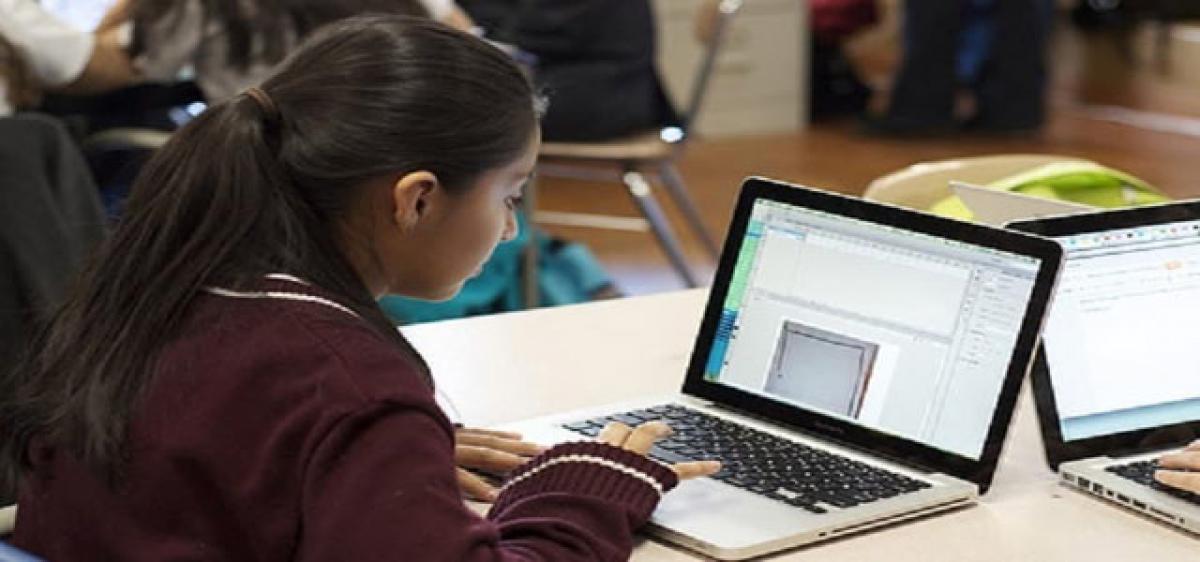Live
- Union Minister Rajnath Singh to Attend Bhakti TV’s Koti Deepotsavam in Hyderabad
- MakeMyTrip Will Acquire CRED's Happay Expense Management Platform to Improve its Business Travel Services
- TTD Board Makes Path-Breaking Decisions
- BRS Social Media In-charge Dilip Arrested for Provocative Posts
- Andhra Pradesh Assembly Approves Seven Major Bills
- Odisha BJP leader Samir Dey passes away
- Average grievance redressal time reduced to 13 days from 30 days: Centre
- Average grievance redressal time reduced to 13 days from 30 days: Centre
- Maharashtra all set for MahaYuti vs MVA contest as high-octane campaigning ends
- Employment rises in India’s urban areas during July-September
Just In

After a year-long practice and competitions in tournaments, Snehit an international table tennis player who barely attends schools, takes a break from his sports activity to appear for his 11th standard final exams. Snehit is always on the move, either for a practice session in Chennai or elsewhere in the world.
Hyderabad: After a year-long practice and competitions in tournaments, Snehit an international table tennis player who barely attends schools, takes a break from his sports activity to appear for his 11th standard final exams. Snehit is always on the move, either for a practice session in Chennai or elsewhere in the world.
Yet he manages to get an above average score in his exams. There are many students like Snehit, who could not make it to the classes for various reasons. Some have taken up part-time jobs, some help family businesses, some pursue arts of various forms and others just bunk classes.
But when it comes to learning and writing exams, these students have apt tools which help them make up for the classes they missed. Surprisingly, such students fare better in exams than the ones who attend college regularly if not studiously.
Traditionally, student learns from teacher. But the guru-shishya relationship is fading away. Technology is slowly becoming an integral part of learning experience.
A scary situation prevails in classroom when students outpace teacher sometimes. Experts in higher education are aware of this trend and cautioning the teachers who are stuck in time. They prod teachers to update their subject knowledge to keep pace with the students who source knowledge from different sources. There are innumerable apps and software like byju’s, Merit nation, Designment to name a few is changing the learning sphere.
“There is no denying the fact that in a few instances students seem to know more than what a teacher is aware of because of internet at their disposal but only a teacher can help with the implication part of the knowledge; awareness and context of it are two different things,” said Uma Mahesh, who teaches physics in a school in Hyderabad.
Graphics put complicated theories and formulae in a proper perspective. “The major advantage of e-learning remains the graphics. Students grasp more, when the content is represented graphically, which is more accurate than that of what a teacher tries to draw on the blackboard,” he said.
With the growing number of learning apps the importance of classroom teaching could be said to be fading. Saurav Jha, Operations Manager at byju’s app said, “The audios and videos capture the attention of students. They make it easy for the students to comprehend the toughest topics.
Memory retention of such learning will definitely be longer if not forever. Why would 5 million students use an app? For, it cuts down the time and effort. You could learn the same from a 2-hour lecture as you do from a 5-minute video.”
Another added advantage to such portals remains to be the reach of the teachings. In a traditional classroom not more than 40 students gain knowledge through an efficient teacher, but the same resource can be used by millions if it is an online setup, said TVS Shankar, a lecturer in Bangalore.
“Teacher can’t cover everything under the sun, that’s where technology helps. One can learn anything using tech. Credibility of the information and constructive usage of the apps is the key,” said Pavani, an economics graduate.
In this scenario where students are readily accepting the shift from conventional form of learning, many feel that human element is slowly being wiped out. “You are not sent to a teacher just to understand mere fact, you are sent to be inspired.
A teacher ingrains values through teachings, behaviour of the teacher is replicated by students often times. Interaction is the purpose of education which is largely missing in the online portals,” pointed out Shankar.
“Each of us is different and requires different teaching methods. In case of e-learning the teaching methods don’t cater to individual needs and most of the time the personal connect which a teacher provides is missing in this channel of communication,” said Snehit.
The education system of India has been adapting from time to time; from gurukul and gurus to classrooms and teachers, from vague interactions to curriculums and methodologies, and gradually from blackboards to PPTs and it has a long way to go.
“Digital learning is the future and we have to accept that. We shouldn’t complain on innovation and not inviting technology is ignorance,” said Akella Raghavendra, who taught a number of Civil Service aspirant using online forum. “Lessons are crisp when it comes to e-learning, which is the need of hour for the fast-paced students of this era,” he added.
In all, technology with a blend of human touch is what the ever-evolving education system is aspired to be. And this generation of tech-savvy students seems to be ready to embrace any such change. A graceful transition could be a milestone in the saga of our education system.
By: S Maitreyee

© 2024 Hyderabad Media House Limited/The Hans India. All rights reserved. Powered by hocalwire.com







